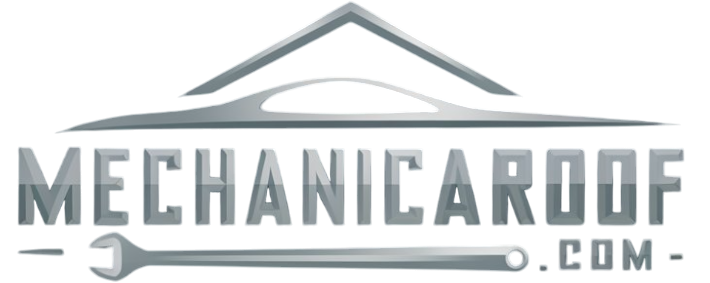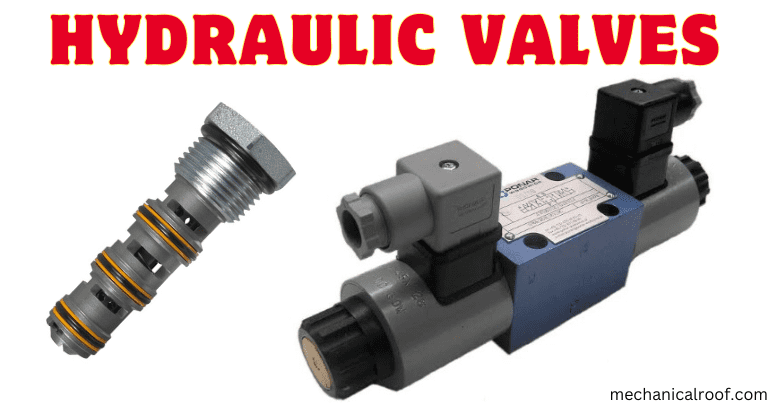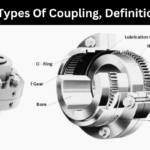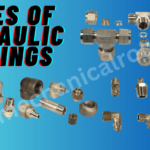What is a Hydraulic Valve?
A hydraulic valve is a mechanical device that controls the flow of hydraulic fluid in a hydraulic device. Hydraulic systems generally have very high stress structures, starting at 200 bars above an average of 700 bars. Thus, they must be composed of materials that can withstand high pressures. The methods of controlling those valves are also vast. They can be physically and automatically controlled by electrical operation, hydrology and pneumatics.
Types Of Hydraulic Valves And Classes
Types Of Hydraulic Valves
Hydraulic valves can be used to perform any of the following three main purposes, which are further categories of hydraulic valves:
1- Controlling the flow rate of fluid
2- Monitor and control fluid pressure in a system or line
3- Control Fluid Direction
This section will describe each of these three classes of hydraulic valves giving examples of valve types for each of them. Hydraulic Flow Control Valves
In a hydraulic system, these valves are used to maintain or adjust the flow rate of hydraulic fluid. They basically have a means to adjust the flow rate. This is usually an opening or port that can change the flow field and by changing that flow field, it then affects the flow rate.
A common example would be managing the speed of extending or retracting a hydraulic cylinder. This can sometimes happen on hydraulic motors or other hydraulic actuators. The speed of operation is directly related to the flow rate of hydraulic fluid. Decreasing the flow rate will decrease the speed and increasing the flow rate will increase the operating speed. A greater flow rate equals a greater force acting on the piston, which also means a greater speed at which the cylinder is retracting or advancing.
Types of Flow Control Valves
Flow control valves vary based on the principle they use to change the flow rate. Flow rate is also an umbrella term because there is more than just one flow rate type. is a volumetric flow rate expressed as mm3/sec. It is used to calculate linear motion in hydraulic piston rods. is the weight flow rate, measured in lb/sec that is commonly used to calculate power in imperial units.
There is also the flow velocity, measured in kg/s, which is commonly used to calculate the inertial force during deceleration or acceleration. Since a flow control valve controls the amount of water at any given time through each valve, the total flow rate can be used for all types of flow The method of changing the flow rate is different.
For example:
- Ball valve
- Needle pin flow control valve
- Diaphragm valve
- Butterfly valve
Thus, each flow control valve will employ a specific mechanism to achieve a specific principle flow control mechanism. is principle and methodology that if the work is done, the flow control will be different. A method is the tool you use to arrive at a scientific idea.
Different Types of Pressure Control Valves
There are a many kinds of pressure control hydraulic valves as discussed below.
- Relief valves
- Sequence Valves
- Counterbalance Valves
- Unloading Valves
- Relief Valves
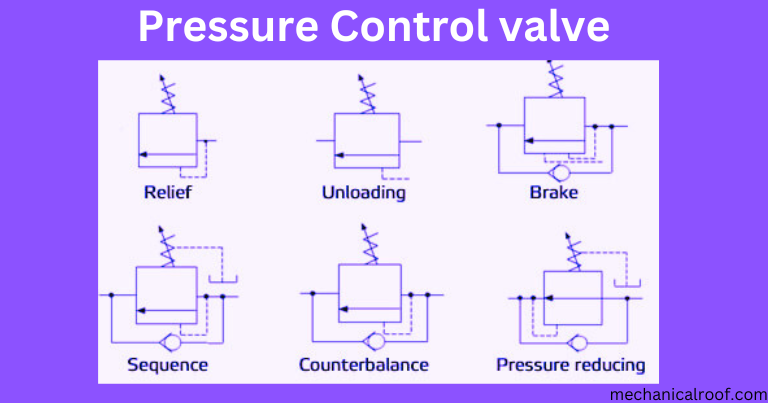
Relief valves:
The system pressure is kept below a set value. It can be used to increase or decrease the pressure from the valve. They also act as protection for equipment from pressure surges or impacts.
Sequence Valves:
These are pressure-operated valves, usually occurring as a valve that normally closes and opens when the water pressure rises to a certain level.
Counterbalance Valves:
These valves provide free flow to the actuator but prevent reverse flow until a certain pressure is reached.
Unloading Valves:
These valves will either allow the pump to flow or allow water to flow in and back to the tank, especially when the machine is not running.
Relief Valves:
Many hydropower systems operate within set pressure limits. These constraints or distances are a function of the introduced capacity required by the agent to perform the task. If these are not maintained, excessive damage to the equipment can occur. Relief valves chip and help protect against mechanical damage and operator injury.
Different Types of Hydraulic Valves Based on Mechanisms of Flow Control ball valve
1- Ball Valve 2- Plug Valve
1- Ball Valve
Ball valves use a ball tube with holes in it. Whenever the holes line an input and output, hydraulic fluid flows through them. Thus, there are many ball valve systems. These configurations vary according to the number of inputs and outputs connected. Balls can be two-sided, three-sided, or four-sided.
The flow to a 2-way ball valve is between one input and only one output. Stopping the ball from flowing will block the path completely. In other systems, such as the 3-way ball valve, any two ports can be tapped as needed.
Ball valve mechanisms are used as “Switches” to close or open the flow. Once you partially turn them, they can also be used as throttle valves but are not recommended for throttling.
2- Plug Valve
The needle pin valve is used to precisely control the flow rate in low-pressure applications. It is used for flow control, especially in controlling pressure compensation flows.
Methods Of Flow Control Used by Hydraulic Valves
The different ways hydraulic valves control flow include:
1- Throttle flow control
Choke flow control is where the size of the channel is changed to change the flow rate. In the picture depicted above, changing the cutout area on the valve will help change the flow. Bernoulli’s principle explains this well.
In the case of the Bernoulli tapered tube below, changing the tube diameter from d1 to d2 increases the flow velocity whether the tube is sunk or not (V1 < V2) It was previously shown that the horizontal velocity of the tube also increases with the flow rate. Therefore, any mechanism that changes the cross-sectional area on the valve will effectively change the flow rate.
2- Pressure compensation flow control
Pressure compensation flow control valves are designed to maintain a constant volume flow rate regardless of any drop in pressure at the valve.
It will have a variable angle and a pressure loss compensation mechanism. The water flows along the channel as shown above. enter through the inlet at which the pressure loss complement changes size. In this example, the pressure loss compensation is a loss compensation spool. The compensating spool is spring-loaded so that the force from the spring, the hydraulic load, and the inflow of water are set to open the inlet to the proper size and to maintain a constant volume flow rate regardless the pressure decreases in the system.
Variation of pressure-compensated flow versus temperature-compensated flow. This variation is because the operating temperature can sometimes be so high that the tolerances set on the mask become incorrect. Heaters are installed to handle these changes.
3- Fixed flow control
This is a basic flow control technique. An otherwise blocked waterway has a dug hole that acts as a tunnel. When used for flow control, water pumps are usually installed in series.
4- Adjustable flow control
The most common valve for changing flow is a priority valve. Priority valves will only change the flow to the required areas at a given time. For example, if the pressure in a system decreases to a certain point, the primary will simply restrict flow and allow critical flow to flow. It does this with a spring load that responds based on applied pressure.
Hydraulic Cartridge Valves
Cartridge valves control the pressure, direction, and flow of the hydraulic fluid. They are an inline valves of sorts, which means they work perfectly with the flow and are best used when high flow and maintenance are required.
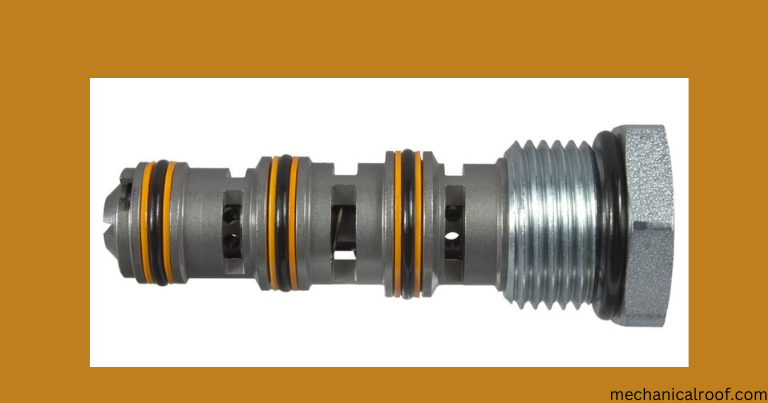
They are considered disembodied valves because they are embedded in the cavity and do not have their rigid chamber. Multiple valves can be operated on a single cartridge. Typical systems include comfort, sequencing, pilot control, flow control, or balance control. They are lightweight, easy to install, inexpensive, waterproof, and easy to maintain.
The two main types of cartridge valves are slip-in and screw-mounted.
- Slip in Cartridge Valve
- Screw Mounted Cartridge Valves
Slip in Cartridge Valve:
Also known as panel type cartridge valve. It will require additional pilot control to make it work. This valve is pressed into the cover plate of the manifold and will be held in place.
Screw Mounted Cartridge Valves:
In this design, the cartridge valves with hydraulic threads will be held in place by cables in the multiplex section. Each will perform a specific function such as comfort, flow control, or guidance.
How to Select the Best Flow Control Valve
The following information and valves apply when selecting a flow control valve.
| Scenario | Valve Type |
|---|---|
| Constant pressure and constant load on a cylinder or hydraulic motor. | Constant flow control valve Fluid exchange control |
| The change in load on the cylinder or hydraulic motor is the change in pressure in the system | pressure compensation valve |
| Changes in the load on a cylinder or hydraulic motor, changes in pressure in the system, and changes in temperature in the system | Pressure and temperature are charged |
Advantages And Disadvantages Of Hydraulic Valves
Some Basic Advantages of hydraulic valves include:
Advantages of ball valves
- So it does not need lubrication and requires less maintenance.
- Ball valve installation is simple and quick.
- If the valve needs to be repaired, their valve seats are easily accessible.
- At the lowest torques on the handle, bubble-tight flow sealing is provided.
- Long service life is provided. They have less mechanical damage and even models made of plastic can stand up to scratches very well.
Disadvantages of Ball Valves
- Jamming is common when used to control abnormal flows, this is due to the suspension of particles getting stuck. In other cases, they can even damage or cause valves to become stuck.
- The valve seat can be easily damaged when used for traction swallowing and is therefore not recommended for intubation.
Conclusion
What function do you want to control: This is what you want the valve to achieve for your system. It may control pressure, flow, or change direction.
How you want to control the work: Do you want it to be controlled electrically, or automatically, or manually by mechanical systems in the hydraulics.
Hydraulic Fluid Type: This means that you are required to choose a valve material that works good with your chosen hydraulic oil.
Valve Size: This is the physical size of the components as they come in different sizes.
Pressure level: This is the maximum pressure at which the valve will operate.
Port and Connection Type: This is the number of interface ports you have, the number of inputs, and the number of outputs.
Operating Temperature: This is the ultimate operating temperature for hydraulic systems.
Related FAQ’s
What do hydraulic valves control?
Answer: The function of a water pressure control valve is to regulate the flow of water through a pipe at water system pressure. This is done by maintaining the required pressure at a safe level and releasing any excessive pressure that could cause the pipe to leak or burst
How do I choose a hydraulic valve?
Answer: Choosing a hydraulic control valve involves determining what is best for your application. Factors to be considered in addition to type include valve design, media type, port size/type, operating capacity, flow rate, operating pressure, and heating range
What valve is used to regulate pressure?
Answer: The most common types of pressure control valves are pressure relief valves and pressure relief valves. The pressure regulator controls the system pressure by reducing part, or all, of the flow into the tank. The pressure relief reduces the pressure delivered to the subsystem by the fluid system.
How do I know if my hydraulic valve is bad?
Answer: Abnormal Operation: A damaged control valve can cause hydraulic motors to operate incorrectly, and you may notice sudden and unexpected leaks, movements, or irregularities
How do I think of a hydraulic valve?
Answer: The stock variety of the pass computer is stamped in a shaded region at the arm cease of the valve body on present day valves. Older valves have a Z casting range at the lower back as a way to inform you which collection, however the character functions should be described.
